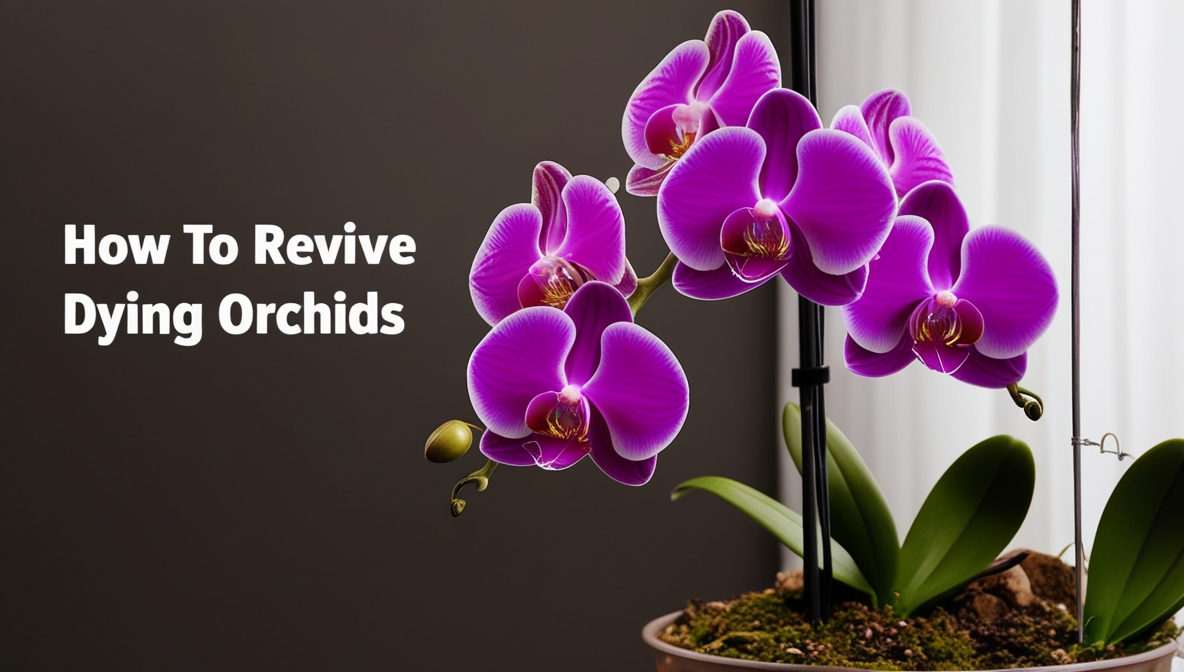Understanding Common Reasons for Orchid Decline

Orchids are known for their beauty and elegance, but they can be a bit temperamental, much like a cat that wants attention only when it suits them! If your orchid is looking less than vibrant, it’s essential to understand the possible culprits behind its decline.
Common reasons for orchid distress include:
– Overwatering: While orchids like a drink, they don’t want to swim! Too much water can lead to root rot.
– Underwatering: On the flip side, if your orchid is as thirsty as a desert cactus, it will suffer.
– Light Issues: Orchids typically need bright, indirect light. If they’re in a dark corner or getting scorched by direct sunlight, they’ll start to droop.
– Temperature Fluctuations: Orchids are sensitive to temperature changes. A chilly draft or a hot blast from the heater can be a recipe for disaster.
– Nutrient Deficiency: Just like us, orchids need their vitamins! A lack of nutrients can stunt their growth and flowering.
Understanding why your orchid is struggling is the first step to getting it back on track. It’s like being a detective for your plant!
Assessing the Condition of Your Orchid
Before you can devise a plan to revive your orchid, you’ll need to assess its condition. It’s like taking your car for a check-up before deciding whether to fix it or trade it in!
Here’s how to evaluate your orchid:
– Check the Roots: Healthy roots are firm and green. If they’re brown and mushy, it’s time to take action.
– Examine the Leaves: Are they yellowing or wilting? This can indicate issues with watering or light.
– Look for Pests: Tiny bugs can be a major problem for orchids. Check the undersides of leaves and around the base for any unwanted guests.
It’s important to remember that orchids can be resilient. With a little TLC, many can bounce back from the brink. Imagine your orchid as a dramatic character in a movie—ready for a comeback!
Reviving Techniques: Watering and Light Management

Once you’ve assessed your orchid’s condition, it’s time to implement some revival techniques. Think of this as a spa day for your plant!
Watering Techniques:
– Adjust Your Watering Schedule: Water only when the top inch of soil is dry. This could mean once a week, or even less in winter when plants are dormant.
– Use Proper Drainage: Ensure your orchid pot has drainage holes. No one wants soggy feet!
Light Management:
– Find the Right Spot: Place your orchid in a location where it receives bright, indirect light. A south or east-facing window is often ideal.
– Rotate Your Orchid: Turn your orchid every few weeks to ensure even light exposure. It’s like giving it a mini-vacation!
By focusing on these basic care techniques, you can help your orchid thrive rather than just survive. Think of your orchid as a diva—it needs just the right conditions to shine!
Nutrient Boost: Fertilizing Your Orchid
Just like us, orchids require food to flourish. But before you start throwing any old fertilizer at them, let’s talk about what they really need!
Fertilizing Tips:
– Choose the Right Fertilizer: Look for a balanced orchid fertilizer, preferably one that’s water-soluble. This will help ensure even nourishment.
– Feed Monthly: During the growing season (spring and summer), fertilize your orchid once a month. Think of it as a monthly subscription for success!
– Dilute the Fertilizer: Use half the recommended strength when fertilizing. Too much can burn the roots—definitely not part of the revival plan!
By giving your orchid the right nutrients, you’re setting it up for a beautiful comeback. It’s like adding a secret ingredient to your favorite recipe; suddenly, everything just tastes better!
Monitoring Progress and Patience
Finally, as you implement these changes, remember that patience is key. Orchids don’t bounce back overnight, and that’s okay!
Tips for Monitoring Progress:
– Keep a Journal: Document changes and improvements. It’s like a diary for your plant’s journey!
– Be Observant: Watch for new growth or blooms. Each little sign is a victory!
In conclusion, reviving a dying orchid is not just about following steps; it’s about building a relationship with your plant. Treat it with care, love, and a bit of humor, and before you know it, you’ll have a thriving, beautiful orchid to admire. Now, go forth and give your orchids the revival they deserve!